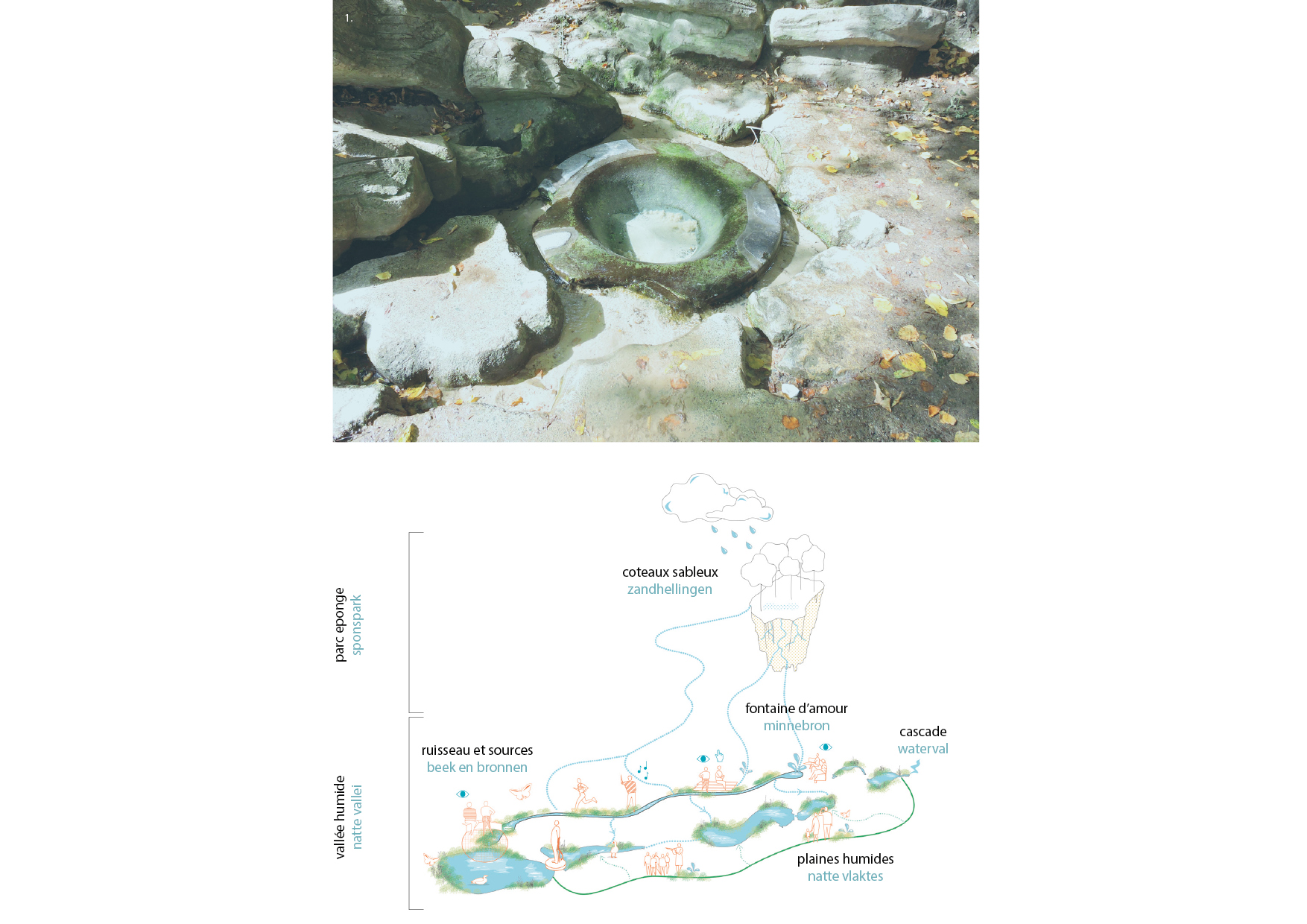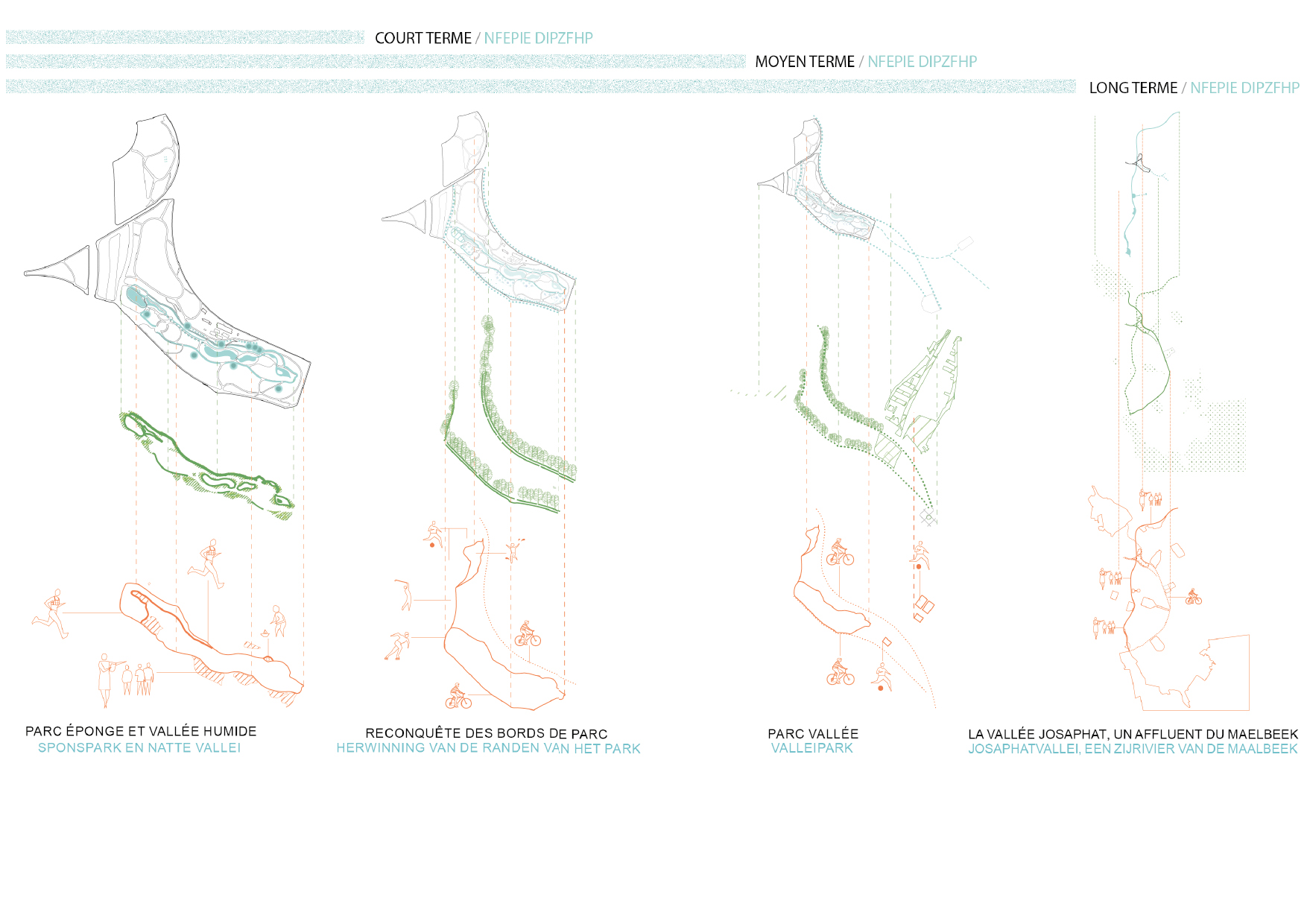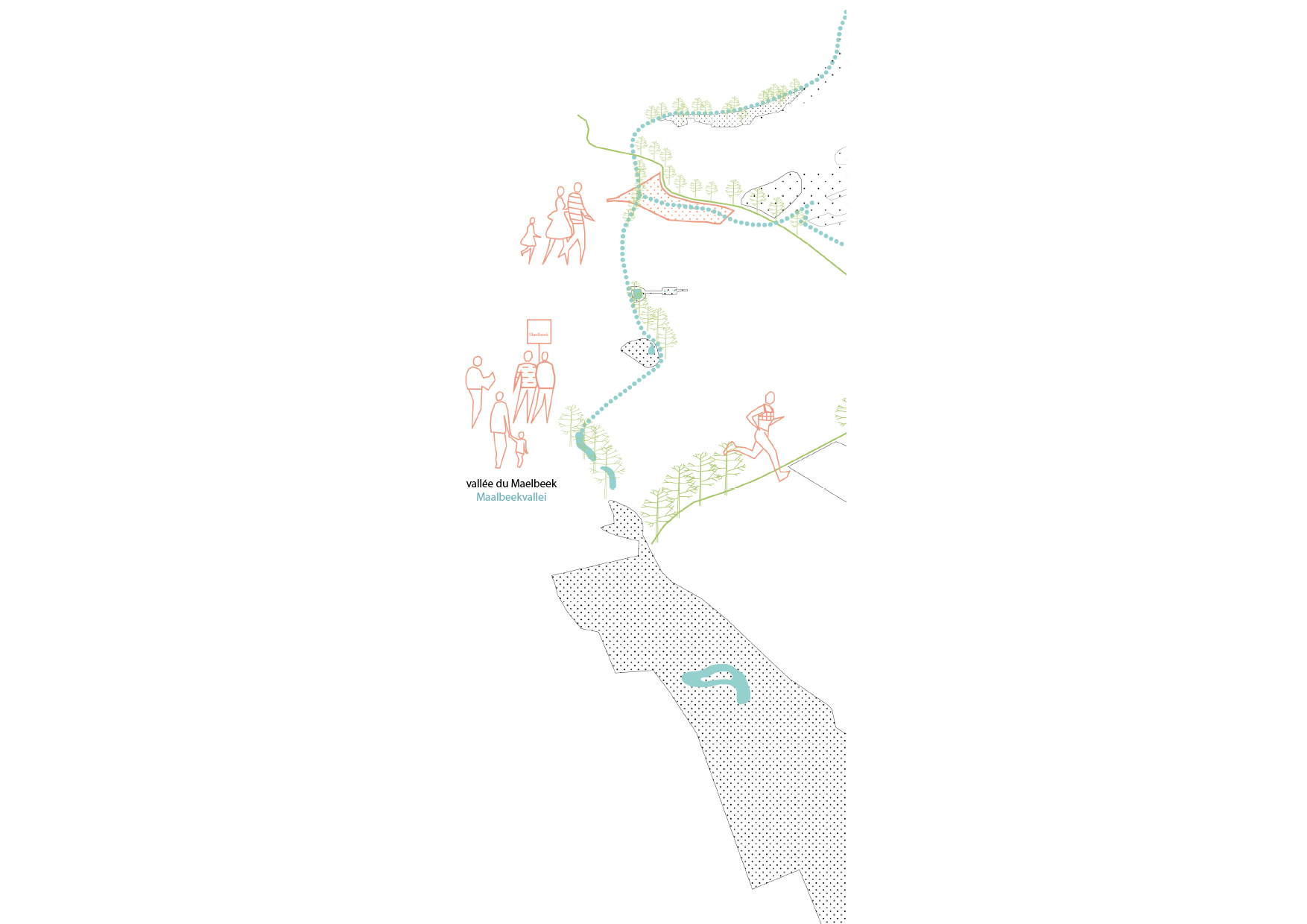JOSAPHAT PARK ADAPTATION (Belgium) 2022
Client : Commune de
Schaerbeek
Team : Taktyk, Urban Water, ARA
TAKTYK project managers : Team BRUSSELS
Program : Guide plan
2022-2100
Location : Schaerbeek,
Brussels (Belgium)
Cost : 70 000 euros
Date : 2022
What is at stake?
We deal here with a real paradox. The park was conceived as part a piece of a
valley, but its current water management entirely ignores this topographical
condition. Above the ground, the architect Galopin orginally designed the park
as a succession of scenes of nature along several lakes with very poor
biological/ecological living quality. Under the ground a vast pipe and pumping
systems bring the water to the top of the park featuring a cascade. Working
closely with hydrologists and biodiversity experts the design research attests
the potential of the sandy ground to infiltrate and retain water above the
clay. We discovered that the wooden hills of the park can become a vast water
reservoir that enables the supply of a constant flow of water into the pond
system. In short, we acknowledged the ecology of the valley as an alternative
to the obsolete technological design of the park.
Our approach
entitled “a sponge on a table” is a critic of the picturesque legacy that
predominate in Brussels, where landscape architecture is understood as a set of
scenery to stroll through. In opposition we propose to re enact a real and
tangible re-connection to ground condition and water cycles acknowledging the
presence in Josaphat park of the source of the main Brussels water table.
Regrounding the
park in the valley system opens up several opportunities for the spatial
adaptation of the park. The water table encounters the clay at several
locations and e. Each emergence encounter become the supports of a design
proposition that will targets one of four incremental interrelated objectives.
An improvement of water flow and water quality in the park enables the creation
of robust ecosystems . These ecosystems allows for an improvement of the
cooling of the park, supporting a greater diversity of uses.
This proposition
addresses the potential of an invisible ground soil condition in Brussels: ;
when sand beds encounter clay layers, subterranean water oozes across large
neglected liminal spaces.
Ce qui est en jeu? Nous sommes ici face à un véritable paradoxe. Le parc a été conçu comme faisant partie d’une vallée, mais sa gestion actuelle de l’eau ignore totalement cette condition topographique. Au-dessus du sol, l'architecte Galopin a initialement conçu le parc comme une succession de scènes de nature le long de plusieurs lacs à la qualité de vie biologique/écologique très médiocre. Sous terre, une vaste canalisation et des systèmes de pompage amènent l'eau jusqu'au sommet du parc agrémenté d'une cascade. Travaillant en étroite collaboration avec des hydrologues et des experts en biodiversité, la recherche de conception atteste du potentiel du sol sableux à s'infiltrer et à retenir l'eau au-dessus de l'argile. Nous avons découvert que les collines boisées du parc peuvent devenir un vaste réservoir d’eau permettant d’alimenter en continu le système d’étangs. En bref, nous avons reconnu l'écologie de la vallée comme une alternative à la conception technologique obsolète du parc.
Notre démarche intitulée « une éponge sur une table » est une critique de l'héritage pittoresque qui prédomine à Bruxelles, où l'architecture paysagère est comprise comme un ensemble de décors dans lequel se promener. En opposition, nous proposons de rétablir une reconnexion réelle et tangible à l'état du sol et aux cycles de l'eau, en reconnaissant la présence dans le parc Josaphat de la source de la principale nappe phréatique bruxelloise.
La relocalisation du parc dans le système de vallées ouvre plusieurs opportunités pour l'adaptation spatiale du parc. La nappe phréatique rencontre l'argile à plusieurs endroits. Chaque rencontre d’émergence devient le support d’une proposition de conception qui ciblera l’un des quatre objectifs incrémentaux interdépendants. Une amélioration du débit et de la qualité de l'eau dans le parc permet la création d'écosystèmes robustes. Ces écosystèmes permettent d'améliorer le refroidissement du parc, favorisant une plus grande diversité d'usages.
Cette proposition aborde le potentiel d'une condition invisible du sol à Bruxelles : ; Lorsque les lits de sable rencontrent des couches d'argile, l'eau souterraine suinte à travers de vastes espaces liminaires négligés.




